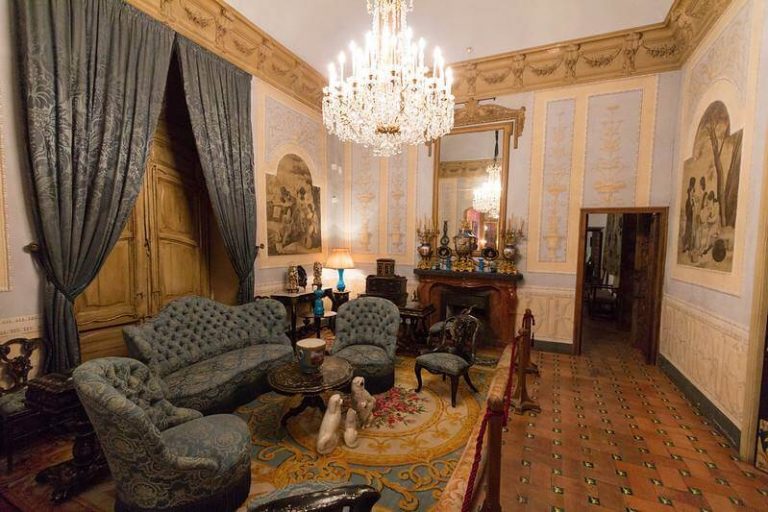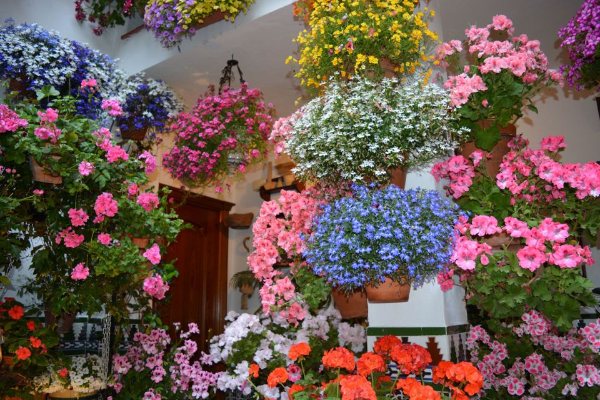
Viana Palace in Cordoba
If you visit Cordoba and want to learn more about the tradition of patios (courtyards), the Viana Palace is a great option.

The Tradition of Patios & the Viana Palace
The visit to the Viana Palace (fifteenth century) includes a guided tour through twelve interconnected patios (courtyards) and a beautiful garden (1,200 square meters). But where does this obsession of locals for patios come from? They even have an annual patio contest that attracts thousands of tourists!!!
Visiting Córdoba?🤔 Why not include a stroll around Palacio de Viana, 😍this colourful palace has 12 courtyards for you to admire and enjoy.💕@spain #travel #lppathfinders https://t.co/WMxOhNhZj6 pic.twitter.com/kNKICVkRhi
— Our World for You – Janis & Gary (@OurWorldforYou) August 24, 2018
The origin of this tradition dates back to Roman times. At that time houses were built around a large courtyard where neighbors and families gather to socialize and spend their leisure time. In some cases, these buildings even had their own water well in the courtyard and a communal restroom for the use of all residents.
Patios served as communal areas within residential neighborhoods, fostering a sense of community and connection among the residents.
This traditional housing model continued during the Muslim period and has been preserved to this day.
Today the Viana Palace is known for its wonderful courtyards (12 in total). Some of the most beautiful are: Patio de los Gatos, Patio de las Rejas, Patio de la Madama, Patio de las Columnas, Patio de la Cancela and Patio del Pozo.
Book your tickets to visit the courtyards of the Viana Palace here
Viana Palace in Cordoba
Viana Palace was commissioned by Ruy Fernández, lord of Fuentecubierta in 1425.
Over the centuries, the owners of this huge palace have changed many times -specifically eighteen times!!- until today. Currently, the beautiful building is owned and maintained by Caja Sur Bank.
The most important reform was carried out in the eighteenth century. After this reform, the building would only undergo small changes. The Viana Palace covers an area of 6.500 square meters divided into rooms, gardens and courtyards.


After being closed to the public for many years, today the palace is used for presentations and book signing events, guided tours and press conferences.
Without a doubt, the greatest attraction of this palace is its beautiful courtyards, a total of twelve (connected by galleries), with great diversity of plants from all around the world.
At the same time, the Palace has a huge library with over 7,000 volumes and an amazing collection of Flemish tapestries and silver pieces made in Cordoba.
What can you see at the Palace of Viana
The Palace of Viana hides many secrets and hidden gems. But there are some rooms that are essential to visit:
Gallery of Tiles: Impressive collection of tiles, one of the best in Europe. The variety of tiles is amazing, ranging from the thirteenth to the nineteenth century.
Black Bedroom: Its name comes from the black furniture that decorates the room. In this part of the palace you can admire hardwood furniture from the eighteenth and nineteenth century.
Perhaps the most remarkable thing about this room is the lavishly decorated bed and the small armchair designed in an Elizabethan style.

Gallery of Leather: Exhibition of leather pieces. Leather is a local handicraft product since the Muslim era (Middle Ages). Arab craftsmen in Cordoba were the first in Europe to introduce and support the development of these craftworks products. Today, artistic leather handmade in Cordoba is appreciated all over the world
Mosaic Room: In this room there is an Ancient Roman mosaic (fourth century) which was found in a small town in the province of Cordoba and purchased by the Villaseca family (one of the families that owned the Palace of Viana). Also in this room you can see a beautiful painting on leather representing Cleopatra at the funeral of Marc Antony (anonymous work).
Marquis Bedroom: This room remains intact, just like the Marquis of Viana (Admiral of the Spanish Armada) left it after his death.
Coffered Ceiling Room: It is one of the most interesting rooms of the Viana Palace. Don’t miss the Mudejar-style roof (merger of Muslim and Christian styles) which imitates the hull of a ship upside down.
The room is decorated with old paintings, Flemish tapestries and antique furniture, creating a unique atmosphere.
This room includes one of the most appreciated art pieces of the palace, the painting “A Lady“, by Juan Pantoja de la Cruz, popular Spanish painter from the sixteenth century.
Useful Information: Viana Palace
Opening Hours
Monday closed
July & August
Tue- Sun from 9am to 3pm
September- June
Tue- Sat from 10am to 7pm
Sun from 10am to 3pm
IMPORTANT! January 1, January 6, May 1, December 24, December 25 and December 31 & regional holidays Viana Palace will be closed
Address:
Plaza de Don Gomez, 2 (Old Town Cordoba)
Built in:
15th century
Tickets :
General: 11€ (Palace, Courtyards, Institutional part and Stables). The guided tour is in Spanish with English-written explanations | Only courtyards: 7€ (self-guided visit) | Only palace: 7€ (guided tour in Spanish with English-written explanations)
Reduced
Palace + courtyard: 6€ (guided tour in Spanish with English-written explanations)
Only courtyards: 0€
Only palace: 6€ (guided tour in Spanish with English-written explanations)
Free entrance
Children under 10 y.o.










